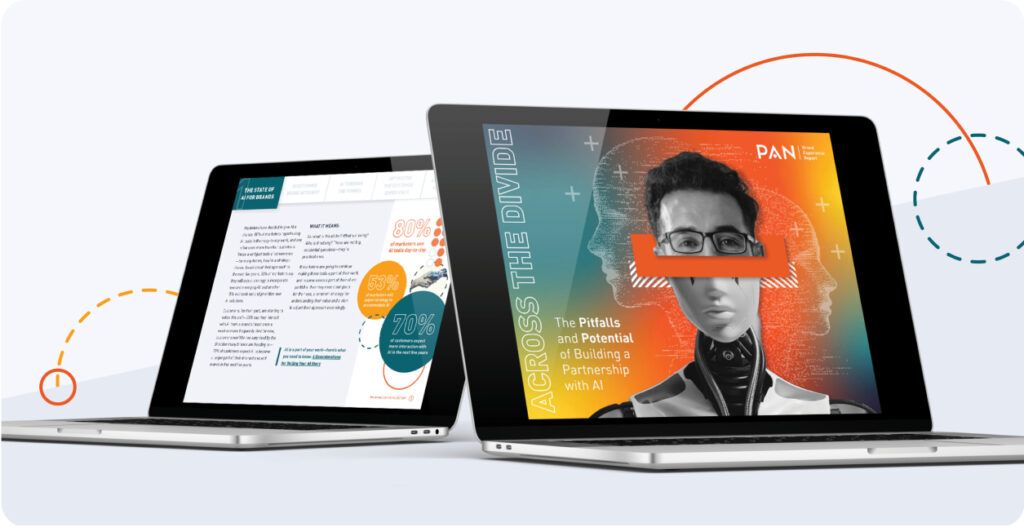The IPO process doesn’t always look the same for each business. While some may take the traditional IPO approach, planning anywhere from 12 to 18 months, others may take just a quarter to prepare their filing via a merger with a special purpose acquisition company (SPAC). Either way, getting ready for the company’s major milestone will call for laser-focused coordination, with all key stakeholders—especially your employee base.
Regardless of how the public offering plays out, a few factors will remain consistent. Preparing and executing an IPO requires a company and its leadership to change over time. As the transition to a public company approaches, the feel of the brand will change, and the tone and content of messaging—both internal and external—along with it. It’s important for leadership to communicate these changes to employees without interfering with the benchmarks and criteria for the IPO.
At the same time, throughout the process, companies need to be cognizant of portraying a consistent and coherent employer brand supported by regular communication.
Empower employee advocates
Ideally, employee advocacy efforts will be in place well before the S-1 filing. Marketing, HR and executives across departments should collaborate to make sure employee voices are shared via social on a variety of topics—culture, DEI, work/life experiences and more.
As a company nears IPO, and perhaps even more especially after it goes public, the business will see an uptick across all awareness channels—specifically earned and social media. As employees see the brand becoming more public-facing, it’s important that the story they get from leadership internally aligns with the one they see in the news—no one wants to hear endless rules and caveats in the company all-hands and unmitigated hype online. This is especially critical for those employees that leverage their social channels in support of the brand. Just as leadership will need to adapt to new methods of communication, employees will need training on the proper protocols for discussing the company as it becomes public.
Preparing and executing an IPO requires a company and its leadership to change over time. As the transition to a public company approaches, the feel of the brand will change, and the tone and content of messaging—both internal and external—along with it.
Employees who feel informed and included in the IPO process are likely to be better brand advocates for the business, and alignment between current employee experience and the one advertised to prospective hires is key. Pre-IPO communication guidelines must be established, and employees need to understand the rules and implications during this sensitive time leading up to and through the quiet period.
Partner with your HR department to empower employees in your brand story.
Be honest, even if you can’t share everything
No matter how long the IPO process lasts, the business will eventually have to go quiet. Particularly as the company gets closer to S-1 filing, communication will need to be buttoned up—that means employees can’t know everything. For companies that typically prioritize a culture of transparency, helping employees adjust to this phase will be essential.
IPOs can have a significant impact on employees’ work and lives, and it’s to be expected that they’ll want to know what’s going on. But while few businesses would want to irritate employees, fewer still can afford to manage accusations of insider trading—or whatever IPO infringement might arise when knowledge is too widely spread. In these cases, transparency is still key. Share what you can, explain what you can’t and be truthful about when you can tell people more.
Whether you’re 6-months out or 2 years out, organize your pre-IPO plans with this template.
Include employees in the future
The IPO process doesn’t end the day the company goes public. The company will continue to shift and maintaining a strong employer brand throughout that time means acknowledging the coming changes to current and potential employees and including them in long-term plans.
The transition to a public company is a huge moment of growth for a business and there will be plenty of time-sensitive work for leadership to manage. But investment in the future of the business, including providing information and resources for employees to better understand how it impacts them, is not a task that can be put off for another day. If you can’t dedicate members of your leadership team to this responsibility, consider working with a third-party consultant or advisor group who can help guide employees regarding the future.
Employee advocacy impacts every department in your organization – learn more!
Control what you can, prepare for the rest
Business structure, stock splits, vesting schedules, strike price—all of these factors will impact the employee experience as the IPO process continues. But on top of it all, employees still need to be able to perform the functions of their jobs every day. To the public, IPOs might change the company overnight, but the same can’t always be said for the people doing the work.
As the business grows and takes on a new public persona, the demands on employees in their day-to-day roles will change, and so too will the support they need from the business. People working in customer support might face a sudden surge in new contacts—ones with exceptionally high expectations. Employees in marketing or PR could be inundated with media requests that all need careful vetting. The C-suite will be watched closely on key initiatives around the brand’s mission, such as DEI, purpose and customer experiences and overall credibility. If you can’t predict every facet of what employees will need—and you cannot—prepare to have open channels of communication to collect feedback so you can be ready to respond.
Conclusions
IPOs may just be one stage of a long process of growth but there is no denying its gravity for the business and employees. When managed and communicated effectively, the IPO can be a core element of the employer brand, proving to current and potential employees that the company is invested in not only their work experience but in their lives too.


